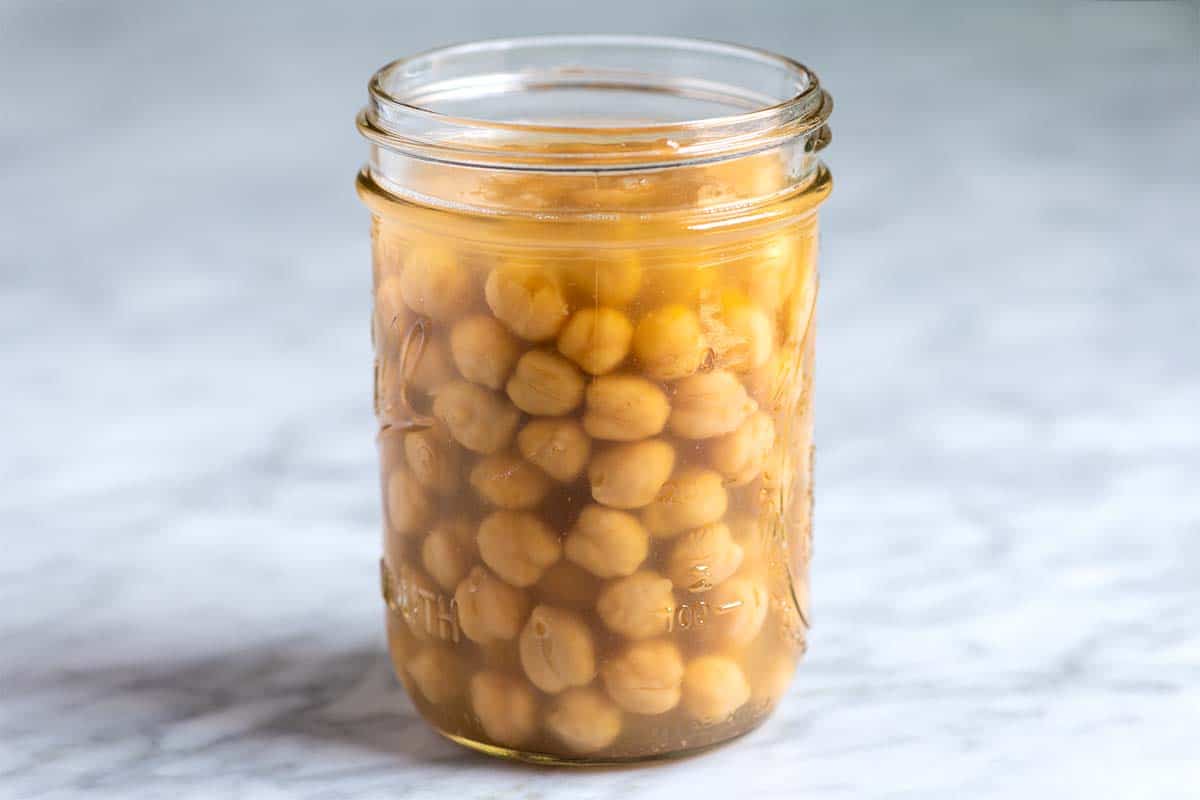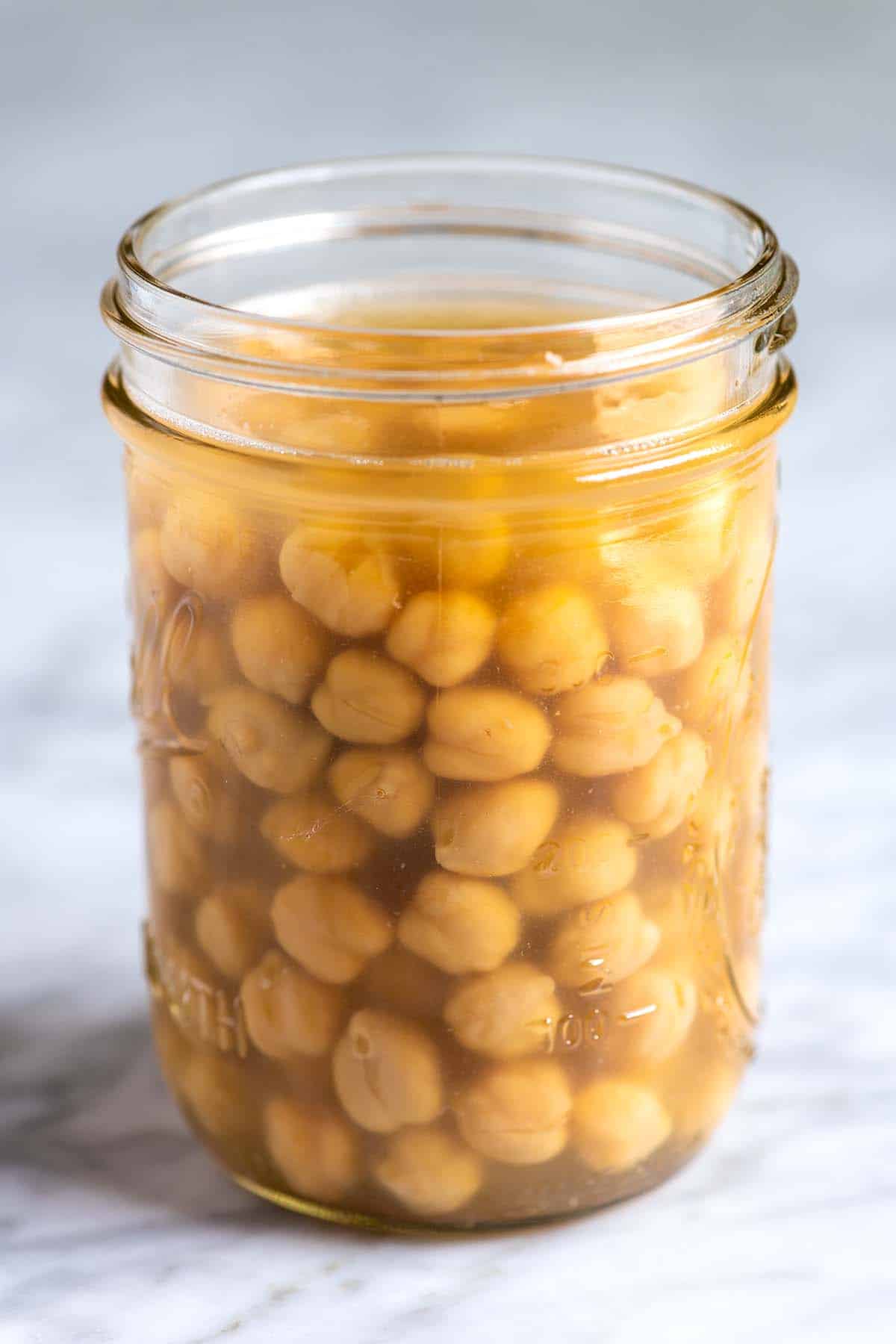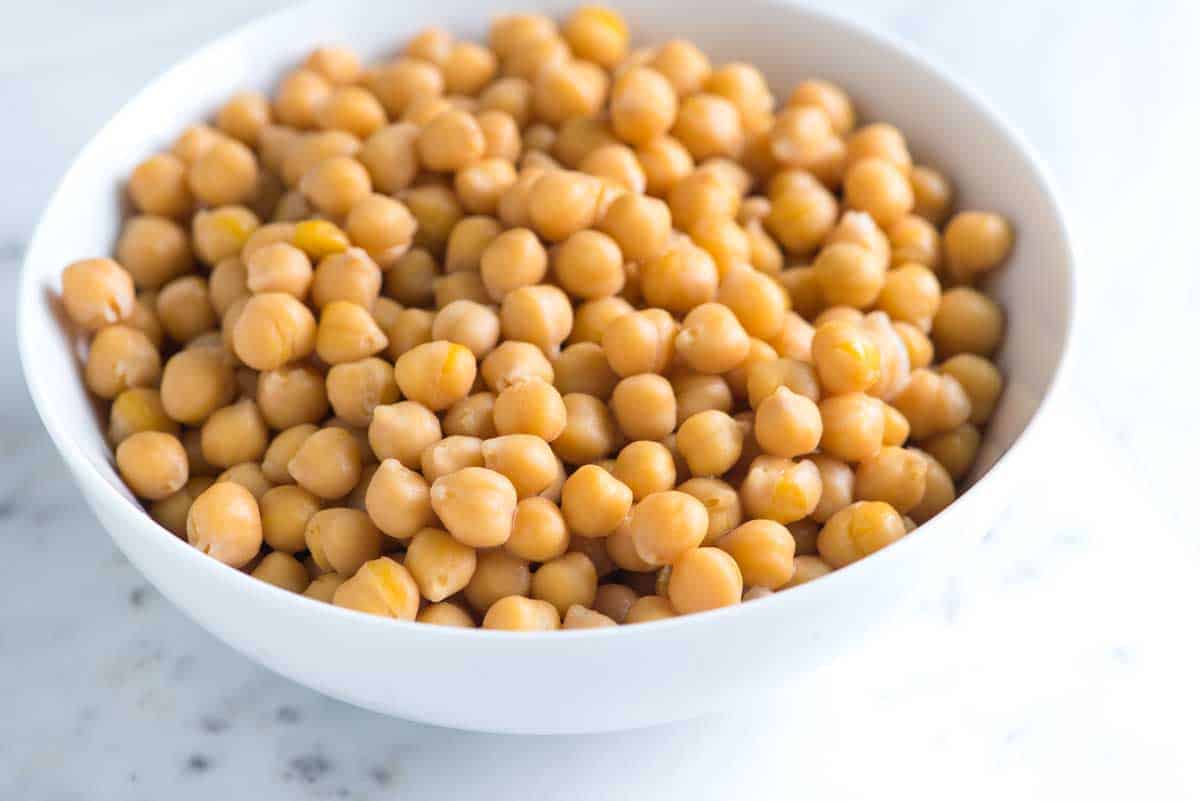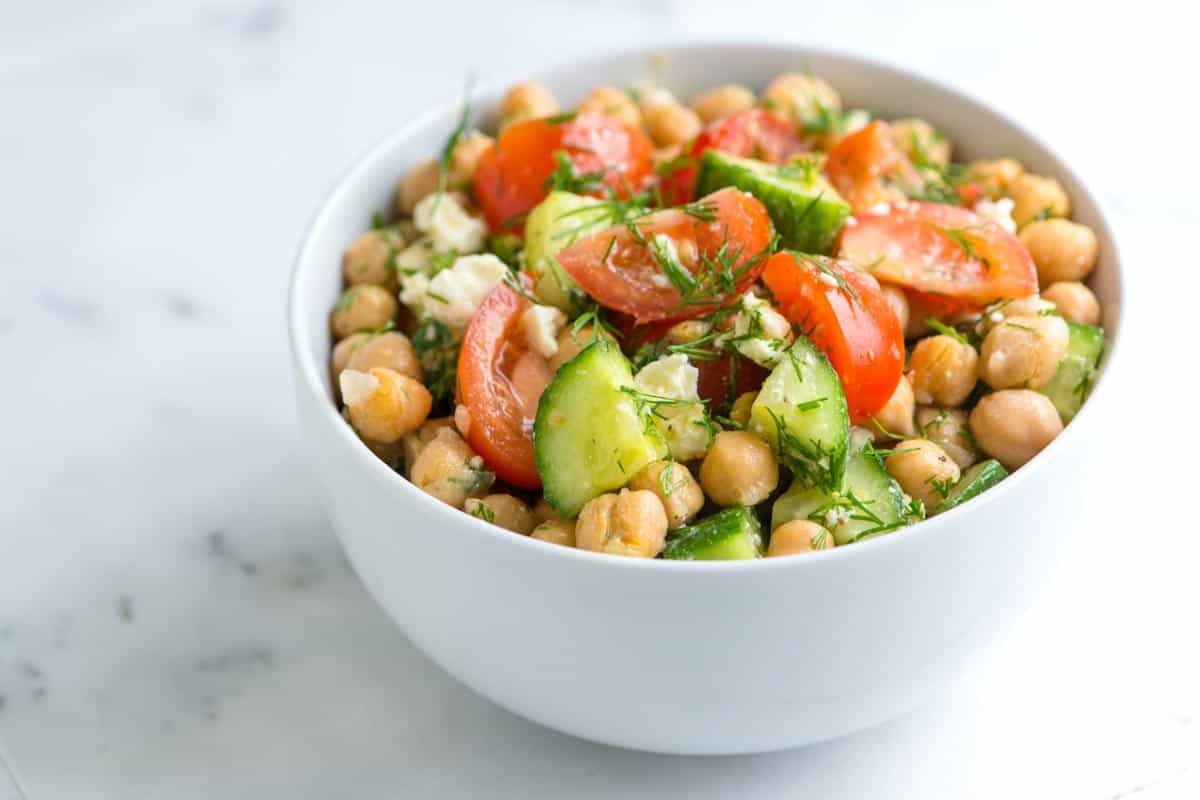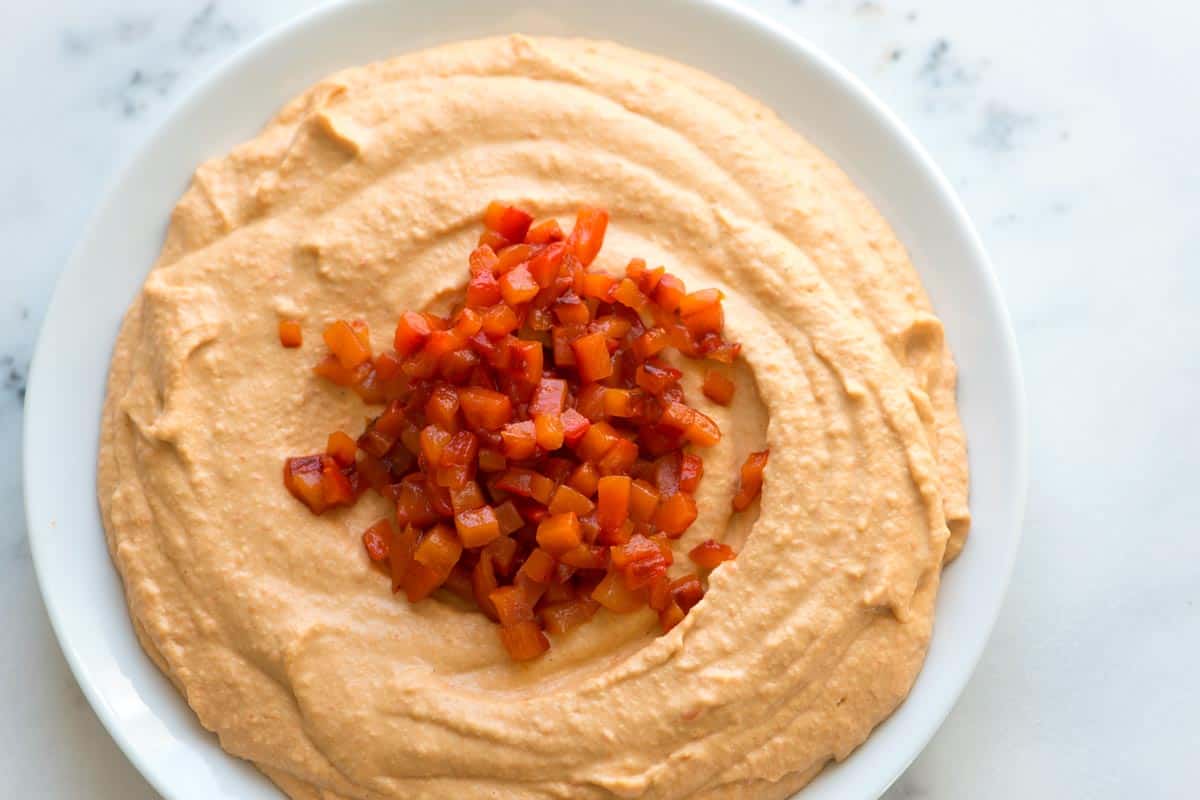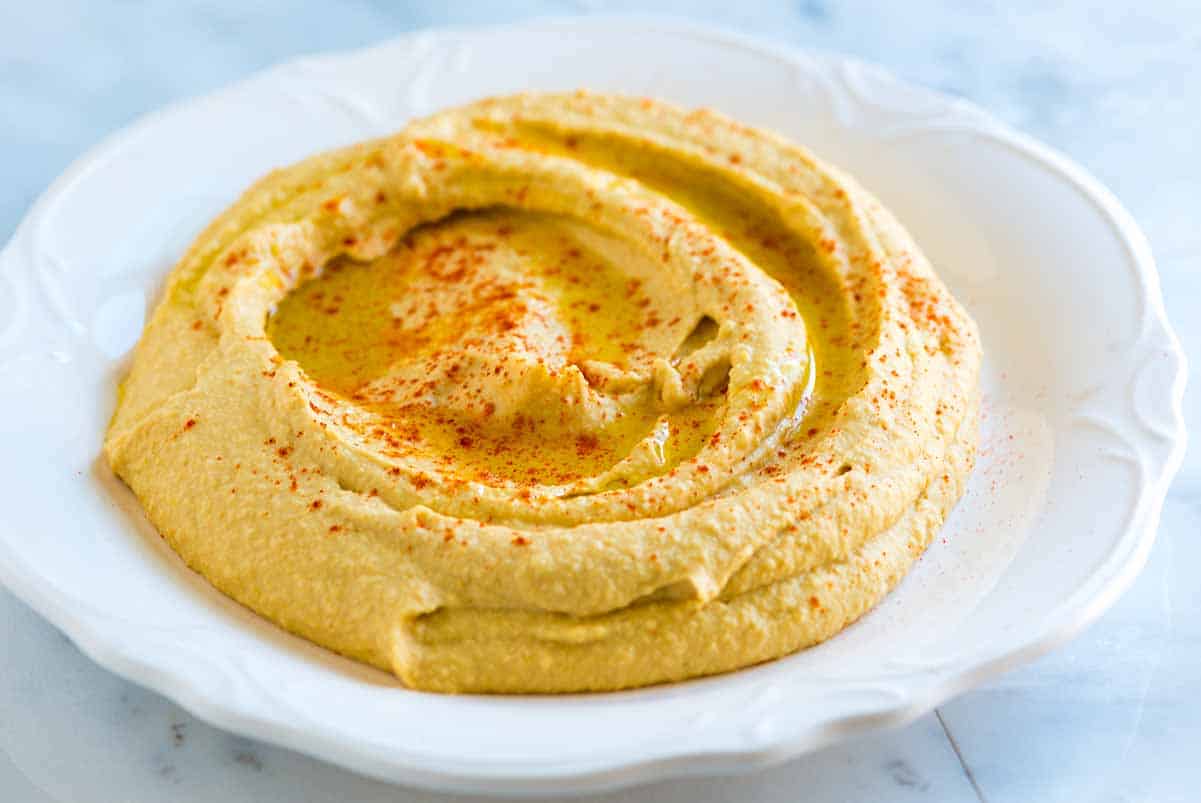While aquafaba can come from any bean, we usually refer to the liquid from cooking chickpeas (garbanzo beans) as aquafaba. Chickpeas tend to produce the best, most starchy liquid. That’s why chickpea aquafaba is the most common type used in recipes. Not long ago, we used to discard this liquid, but now we know better! When beans are cooked or canned, the liquid becomes starchy, and this starchiness is what makes aquafaba so special.
What to Do With Aquafaba?
It was only in 2015 that Goose Wohlt, a software engineer looking for ways to make egg-free meringues, discovered the magic of bean water (source). We already know that it works as a thickener, stabilizer, binder, and emulsifier, but it’s safe to say that aquafaba uses are still being discovered. Here are the most common uses that we know of. If you know more ways to use it, leave it in the comments!
Replace egg whites or whole eggs in baked goods like homemade pancakes and muffins. Make egg-free meringue or pavlova Make whipped desserts vegan, like chocolate mousse. Make vegan buttercream Make vegan whipped cream or ice cream Make vegan mayonnaise or aioli Make extra creamy hummus Make vegan butter Thicken soups
Another egg replacer: We also love flax eggs when replacing eggs in recipes.
How to Make Aquafaba
The easiest and most reliable way to make aquafaba is to use the liquid from a can of chickpeas. To avoid excess saltiness, choose low-sodium or no-salt-added chickpeas. For a starchier aquafaba, give the can a good shake before opening it. You can also make aquafaba from scratch by cooking dried chickpeas. This method requires more effort, as you’ll need to simmer the cooking liquid until it thickens to the consistency of canned chickpea liquid, which resembles egg whites. Here’s how to make aquafaba from scratch: When making aquafaba from scratch, avoid introducing oil or fats into the liquid. These can cause problems if you plan to whip the liquid later.
How to Substitute Eggs with Aquafaba?
Aquafaba has many uses, but one of our favorites is as an egg replacer in pancakes and baked goods like muffins. It does an excellent job of mimicking many of the characteristics of eggs in baking. We use aquafaba to make these delicious vegan blueberry muffins! Here’s a general rule of thumb for substituting aquafaba for eggs:
3 tablespoons of aquafaba = 1 large egg 2 tablespoons of aquafaba = 1 egg white
You can use aquafaba in three ways when replacing eggs:
Lightly Whisked: Use a hand whisk to create a light, frothy consistency, which works well as an egg binder in cookies, pancakes, and muffins. Soft Peaks: Whip aquafaba with an electric mixer or stand mixer until it forms soft peaks, perfect for adding airiness to batters for waffles, muffins, and cupcakes. Stiff Peaks: Whip aquafaba with an electric or stand mixer until it forms stiff peaks. You can then use it to make meringue, ice cream, or even vegan macarons.
We’ve found the most foolproof way to whip aquafaba is with a stand mixer and a small amount of cream of tartar. While you can use a hand mixer or food processor, a stand mixer with its large whisk attachment works best. You don’t need cream of tartar to whip aquafaba, but we highly recommend it. Cream of tartar helps stabilize the foam, preventing it from deflating quickly. We’ll share a full recipe below, but remember, a pinch of cream of tartar goes a long way! Whipping aquafaba can take time, so keep going even if it doesn’t happen instantly. Keep whipping! Some people report taking up to 10 minutes, but soft peaks usually form within 4 or 5 minutes. Aquafaba can be used as an egg replacer in three ways: (1) lightly whisked as a binder in cookies, pancakes and muffins, (2) whipped into soft peaks and folded into batters that benefit from added airiness like waffles, muffins and cupcakes, and (3) whipped into stiff peaks and used to make meringue, ice cream or vegan macarons. When choosing which state to use aquafaba in, you will most likely need it lightly whisked or whipped into soft peaks. Lightly whisked aquafaba does a fine job in most recipes, but you will likely see even better results when you substitute that with whipped aquafaba. The recipe below is for whipped aquafaba. 1/4 teaspoon cream of tartar 2Lightly whisk the liquid, then measure the amount of aquafaba you need. As a guide, you will need three tablespoons of liquid when substituting a whole egg and two tablespoons when substituting one egg white. 3Choose how you would like to add the aquafaba to your recipe: lightly whisked or whipped. 4For lightly whisked, add the measured liquid to a wide bowl and beat by hand with a wire whisk until it looks frothy, about 1 minute. You do not need to add the cream of tartar. 5For whipped aquafaba, add the measured amount to a stand mixer fitted with the whisk attachment. Add the cream of tartar, and then turn the mixer on. 6Whip on high speed until your desired fluffiness. This takes some time, so be patient. We usually stop mixing after 4 to 5 minutes. Remove the whisk and turn it upside down to tell when it is properly whipped. Soft peaks will hold at first and then slowly melt back into themselves after a second. Firm peaks will hold and look more distinct, but the tips will still fold back on themselves. Be careful not to overwhip as this can cause it to lose its airiness and deflate.
